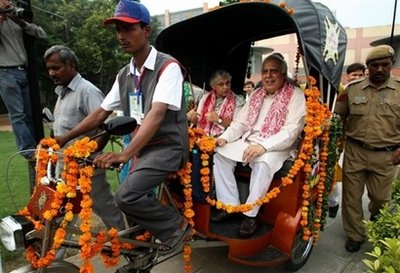As I drive from the southern border of our great country to the northern, I am painfully aware of my carbon footprint. Although I am somewhat comforted that my car gets 30 miles to the gallon, and that when I am home in Sarasota I walk everywhere, it doesn’t change the fact that travel is not an environmentally friendly activity.

Someday, we will have the technology to reduce fossil fuels; Virgin Air is currently testing a jet engine fuel that contains a high percentage of biofuels, and numerous manufacturers are bring electric vehicles to market. One of the latter, the “soleckshaw,” is a motorized cycle rickshaw that can be pedaled normally or run on a 36-volt solar battery.
Earlier this month the solar rickshaw was unveiled in New Delhi, India, a city that suffers from extreme pollution. The soleckshaw is being road-tested in Old Delhi’s Chandni Chowk area, one of the city’s oldest and busiest markets. This byzantine maze of narrow, winding streets is daily choked with buses, cars, scooters, cyclists and brave pedestrians.
Rickshaws have always been environmentally friendly. Unfortunately, the masses of middle-class Indians turned up their noses at the traditional mode of transport, believing it to be beneath their dignity to travel in a conveyance run by human pedal-power. It is hoped that the soleckshaw will gives the rickshaw a totally new image that will be more acceptable to the middle-classes, thereby reducing the number of gas and diesel vehicles that clog the roads. And if the above photo is any indication, they are on their way to achieving that goal.
